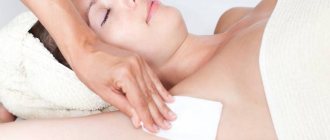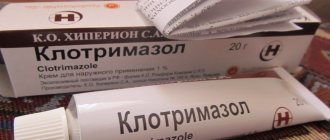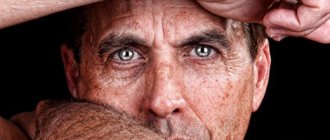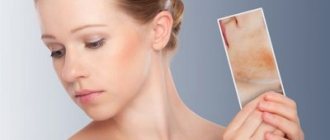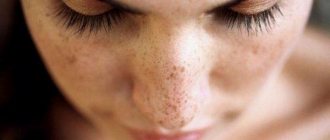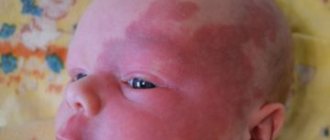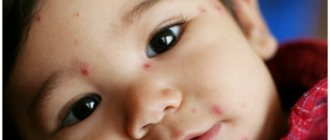Main reasons
Areas of hyperpigmentation varying in area and color intensity can form due to the following reasons:
- Depression and stress lead to a shift in all regulatory functions of the body, the appearance of ailments with the formation of islands of hyperpigmentation.
- Abuse of tanning or solarium.
- A residual phenomenon after damage to the integrity of the skin as a result of burns or frostbite.
- Taking certain medications.
- Problems with the functioning of the digestive organs.
- Elderly age. This is due to changes in hormonal levels and a decrease in the body's defenses.
- Pregnancy. During this period, a restructuring of all organs and systems occurs. High load leads to disruption of some regulatory mechanisms, including the process of melatonin production. Therefore, pregnancy is often accompanied by the appearance of spots, which is not considered a pathology. After childbirth, they most often go away on their own.
- Ailments accompanied by improper functioning of the adrenal glands (Addison's disease or Itsenko-Cushing's disease).
- Skin cancer.
- Bacterial or fungal infection.
Women are more prone to the formation of various spots. This happens because they more often experience hormonal changes in the body (adolescence, pregnancy, menopause).
Sometimes spots occur due to several factors. They should definitely be taken into account when prescribing treatment.
A number of chronic pathologies lead to increased melanin production . Most often this symptom is accompanied by:
- liver dysfunction (hepatic type of melanosis);
- tuberculosis (cachectic);
- renal failure (uremic);
- diseases of the internal secretion organs (diabetes mellitus, hyperthyroidism).
Hyperpigmentation also accompanies poisoning with tar, arsenic compounds, oil or resins. For the same reason, this phenomenon is observed in people who have a great addiction to tobacco.
Common Causes of Brown Spotted Rash
Brown spots on a specific area or throughout the body can be congenital or acquired. Often their presence is due to an increased concentration in the human body of a substance such as melanin. It is responsible for the pigmentation of the skin, and when too much of it accumulates in the cells, light brown spots appear on the skin. Over time, they darken if they are not treated promptly.
Predisposing factors may include:
- genetics,
- light skin (it is most susceptible to the formation of age spots),
- natural aging process of the epidermis,
- hyperpigmentation,
- period of bearing a child,
- hormonal changes,
- puberty in adolescents.
But, if none of these factors are related to this problem, and there are still light brown spots on the body, what could this mean? In this case, the reasons will not be so harmless, and to eliminate them you will have to consult a doctor. Pigmentation on the body can appear due to problems:
- with liver function,
- with the functioning of the thyroid gland,
- with skin (fungal pathologies, melanoma).
Note. Sometimes the appearance of light brown spots on the body can be associated with prolonged exposure to the sun or in a solarium. If you have hypersensitive skin, or your body reacts too strongly to UV rays, it is better not to take risks. Avoid sunbathing so you don’t have to worry about treating pigmentation on your body later.
Types of stains
Doctors distinguish several types of age spots.
Becker's nevus (melanosis)
It occurs in young men during puberty - from 10 to 15 years. This formation is much less common in adult men or women. With it, a dark brown spot appears, irregular in shape and without clearly defined boundaries, up to 20 cm in diameter.
Favorite localization is on the legs, arms or chest. Increased hair growth is observed in the affected area. The disease is transmitted genetically, and familial cases of Becker melanosis are common .
Dubreuil's melanosis
With this deviation, a small spot is observed that rises slightly above the surface. It is prone to rapid growth, darkening and degeneration into a malignant tumor. It often occurs in people of the white race after reaching the age of 50 (Dubrey's melanosis is more often described in the fairer sex).
The probability of malignancy reaches from 40 to 75%, after 10-15 years. The tendency to this is especially high among people who refuse timely treatment. The process of degeneration is accompanied by the appearance of scarlet papillomas, nodules and freckles around the formation in the affected area. It becomes completely dark, thickens and flakes off.
Acanthosis nigricans
This disease is rare and may be malignant or benign . The spots are usually located in the folds of the skin: in the groin area, under the knee, mammary gland, in the armpit, between the buttocks. If the course is malignant, then the changes are much more pronounced.
In a child or adolescent, the disease occurs as a result of a hereditary predisposition or due to disruption of the endocrine organs.
In older people, the appearance of acanthosis nigricans is not a good sign, which indicates the presence of a malignant process.
Lentigo
They appear in people of any age in places that are exposed to solar radiation. Localization of small brown spots in this case occurs on the arms, shoulders, and upper back. The disease often affects the face.
Mastocytosis (urticaria pigmentosa)
Quite often, urticaria pigmentosa occurs in childhood. First, reddish spotty rashes form on the body, which turn into blisters with ichorous contents. At this time, they bother the baby, as they begin to itch a lot. After opening, brown marks remain on the skin, sometimes the rash goes away without a trace.
In adults, the disease is severe. Systemic damage leads to disability or even death of the patient.
Coffee stain
This type of pigmentation may develop after birth or over time. One or more spots appear that have clearly defined boundaries and a uniform dark color. Over time, they may increase in size. Hair growth never occurs in these areas. The causes of coffee stains are not fully understood. There is an assumption about a genetic predisposition to their formation.
Leopard syndrome
This pathological condition is typical for young people. With it, the color of the skin changes like lentigo multiplex. The disease is difficult, as it is not limited exclusively to skin manifestations . Almost all organs and systems suffer.
The child's growth and development are delayed, pulmonary artery stenosis is diagnosed, and arrhythmias occur due to conduction disturbances. Pathological abnormalities in the genital organs appear. The cause of this condition is a gene mutation.
Video about the causes of dry patches on the skin and treatment methods
Spots that appear on the skin can be generally characterized as follows - these are areas that differ in color and structure. They can be smooth, flaky, light or dark. According to their origin, such spots can be divided into the following groups:
- Pigmented. Caused by excess melanin in the body, or its absence. There are different shades - from white, brown spots on the skin to black.
- Vascular. As a rule, they are pink-violet in color and appear as a result of changes in the vessels close to the skin surface.
- Dermatoses. Occur due to infection or diseases of the central nervous system. In most cases, they appear as pink-red, scaly spots on the skin, often very itchy.
Spots can often appear as a result of some kind of activity, for example, when working with dyes or substances that change the color of the skin. Learn more about the reasons for the appearance of various spots on the skin, their photos and descriptions below.
You should not self-medicate skin spots, since many of them can be the result of systemic diseases:
- immune;
- endocrinological;
- diseases of the central nervous system.
Therefore, first you need to contact a dermatologist, who will determine the root cause and type of spot on the skin, and, if necessary, advise other specialists (mycologist, allergist, neurologist, or endocrinologist).
The reasons for the appearance of dark spots on the skin are as follows:
- Hormonal imbalance. Dark spots appear on the skin during certain periods of a woman’s life – during pregnancy and menopause.
- With age, pigmentation is disrupted - pigment spots appear.
- With a fungal infection, the dark spots become flaky and itchy. For example, lichen versicolor, yellow-brown, looks like a dark spot.
- Brown spots may indicate cancer. In particular, moles degenerate into melanomas, a dark-colored cancerous tumor.
- Pityriasis rosea. The disease begins with the appearance of a so-called maternal spot about 2 cm in diameter, often somewhere in the chest area. After a few days, smaller daughter spots begin to appear all over the body, but rarely appear on the face. In the middle, the spot flakes and itches. The disease is accompanied by fatigue, soreness of the affected areas, and enlarged lymph nodes. They are treated with vitamin therapy, taking Suprastin and Hydrocortisone. As an additional method, heating with UV rays is used.
- Ringworm. The disease is contagious. It is transmitted through contact with a sick person or through household items. The likelihood of infection increases with weakened immunity and skin injuries. May affect the scalp, body and nails. Hair thinning is observed in areas of hair growth, ringworm on the skin looks like a round pink spot with a rim of pustules, nails become gray and crumble. Taking Micoconazole helps in treatment.
- Shingles. It is considered a contagious disease, a form of chickenpox. Before the rash appears, the sick person feels all the symptoms of the flu: aches, headaches, chills, and fever. In the place where the rash appears in a few days, itching and tingling are felt. The rash is localized along the nerves, often in the chest area. Treatment is carried out using the drug "Acyclovir" and its analogues. Therapy may not be prescribed if the disease is mild. It goes away on its own.
- Lichen planus. The causes of this disease are not completely clear. Cases have been recorded when it occurred as a result of taking Tetracycline, as a response to stress, gastrointestinal diseases. It appears in the form of small red papules that peel and itch. It is treated with the help of drugs: Chlorine, Prednisolone, Clemastine, Cetirizine and others.

- Tinea versicolor. A fungal disease that can be caused by a variety of reasons. It is not contagious. The spots are whitish. The infection affects only the top layer of skin. The disease is not accompanied by itching. They are treated with antifungal drugs: Clotrimazole, Ketoconazole, Lamisil, Mycospor and others.
- Pityriasis alba. A non-contagious disease caused by a fungus. There are no other symptoms other than visual ones. They are treated with drugs that restore pigmentation.
- Eczema. Characterized by itching and redness of the skin. There are several types of eczema, in particular contact dermatitis and dyshidrosis. With dyshidrosis, the disease affects only the fingers and toes, palms and soles of the feet; other forms are manifested by extensive rashes, which are accompanied by peeling and cracks. Ringed eczema is a red, ring-shaped rash that is localized on the buttocks and inner thighs. Accompanied by itching. Treatment is carried out locally using hormonal and non-hormonal ointments, anti-allergy drugs, and diets.
- Psoriasis. It is characterized by the appearance of so-called psoriatic plaques - pink, thickened spots that rise above the surface of healthy skin, peel and itch. The disease is autoimmune. Treat with hormonal and non-hormonal ointments. Hormonal ointments quickly bring relief.
- Diaper rash. They are most often found in children, although they can also occur in adults in places of increased friction in the folds of the skin. In children, they are localized in the perineum, on the inner thigh, and buttocks. They look like bright red spots. Painful. They are treated by increasing contact of the affected area with air, using antiseptic and healing drugs, for example Bepanten, Panthenol.
- Measles. Also a typical childhood disease. It begins with catarrhal symptoms, then a rash appears: first behind the ears and on the face, and then it spreads throughout the body. Closer to recovery, the spots acquire a bluish tint. No specific treatment is required; therapy is used aimed at eliminating the symptoms: cough, high fever, suppuration of the eyes. It is possible to use antiviral agents and antibiotics.
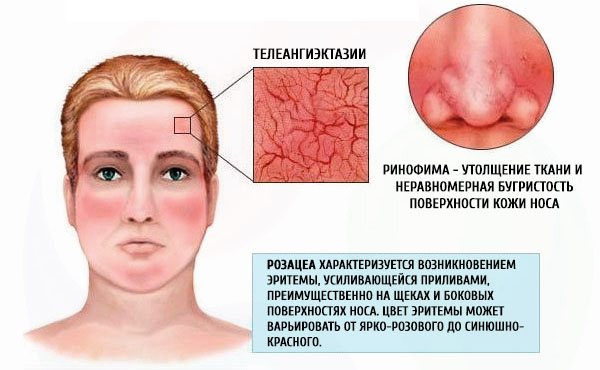
- Rosacea. Red spots appear on the skin, which are a consequence of enlarged blood vessels. The causes of this disease are not yet fully understood. In addition to redness, there is dryness and flaking of the skin, swelling of the affected area.
- Skin cancer. Skin cancer manifests itself in a variety of ways. It may be a flat red spot, or an ulcer or lump. Their difference is that they are painless and do not itch. Skin cancer is often associated with overexposure to UV rays. As a result, uncontrolled growth of skin cells occurs, and they degenerate into a cancerous tumor.
Depending on the causes of the disease, the following drugs are prescribed:
- Antihistamines. Remove symptoms of an allergic reaction: relieve swelling, itching, redness. However, a lasting effect cannot be achieved if contact with allergens continues. Doctors recommend taking: Claritin, Citrine, Loratadine, Suprastin, Zodak, Zyrtec.
- If dry spots on the skin are provoked by nervous tension and stress, then these sedatives are prescribed to calm the nerves: Novo-Passit, Persen, Afobazol, Tenoten, tinctures of medicinal herbs.
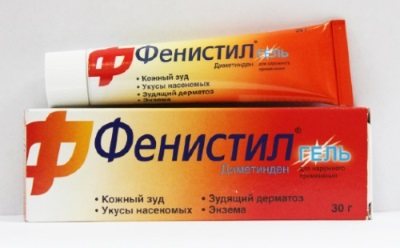
- For topical use, ointments of hormonal and non-hormonal origin are prescribed. Hormonal ointments are often prescribed for chronic skin diseases that cannot be treated with weaker medications - these include psoriasis and eczema. Examples of prescribed hormonal drugs: Flumethasone, Dermovate, Akriderm, Hydrocortisone. Non-hormonal ointments: Salicylic ointment, Antipsor, Naftaderm, Berestin.
- Having diagnosed liver disease, the doctor will prescribe hepatoprotectors: Essentiale, Remaxol, Ursodez, Rezalut Pro, Galstena.
- It is possible to prescribe antibiotics and painkillers according to indications.
Laser therapy is indicated for dark, dry spots on the skin caused by the accumulation of melanin. When exposed to laser, melanin is destroyed, but healthy skin cells are not affected.
Chemical peeling is a procedure that involves applying lactic, fruit, and glycolic acid to the skin. The principle of operation is that the top layer of skin is burned with acid and after a few days peels off, revealing healthy skin.
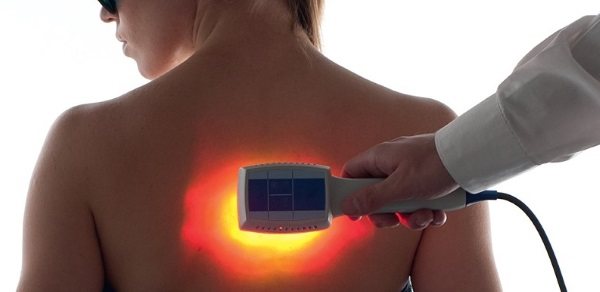
For psoriasis, the following folk remedies are recommended:
- St. John's wort decoction with mustard (1 tsp herb per 1 cup water). With a decoction of the herb, boiled for 5 minutes, you need to dilute the mustard powder to a paste-like consistency and add a small piece of butter. It is recommended to apply the ointment to psoriatic plaques only once a week.
- Tincture of medicinal herbs in vodka. You need to take the herb of celandine, chamomile and string, mix in equal proportions with each other and pour in vodka so that the liquid covers the herb. Infuse in a hermetically sealed container in a dark place for 2 days. Wipe the skin daily.
- A compress of flaxseed oil helps relieve itching.
Dry spots on the skin (what this may be will be discussed in detail below), if they appear due to exposure to external factors, are recommended to be treated with the following means:
- A decoction of chamomile or string. Helps relieve irritation and redness. 1 tbsp. medicinal herbs, pour 1 liter of boiling water and let it brew for 15-20 minutes. Then you need to wash your face or wipe the damaged areas of the skin with this infusion, depending on the location of the spots.
- Honey mask with cottage cheese. Effective if dry spots appear due to insufficient skin nutrition. For 2 tbsp. liquid honey take 1 tbsp. fat cottage cheese, mix until smooth, then apply to the face. After 30 minutes, wash off.
- Olive oil with honey. Mix the ingredients well in a 1:1 ratio. Make applications on a previously cleansed face. After 30 minutes, wash off the mask with warm water and apply moisturizer.
- A peeling stain can be treated with a scrub made from sea salt, honey and olive oil. For 4 tbsp. take 1 tbsp of honey. salt and oil.
- Baths with the addition of decoctions of medicinal herbs - chamomile, string, bay leaf. This technique is especially recommended for children. In addition to the fact that herbal decoctions help solve the problem of dry spots, they also soothe.
Diagnostic methods
If dark spots appear on the body and face, you should consult a dermatologist. After the examination, an experienced specialist will refer you for the necessary tests and, if necessary, recommend other doctors. This could be an endocrinologist, gynecologist, genetics expert, or therapist.
Consultation is especially necessary in such cases:
- when a spot or mole increases in size or rises above the surface of the skin;
- if hyperpigmentation begins to change color (becomes darker, lighter, turns red);
- unpleasant sensations occur in the area of education (itching, soreness, hypersensitivity);
- There is blood or fluid coming out of the mole.
It is very important to determine the cause of the spots and not to miss the moment of their possible malignancy.
Additional research methods in this case will be:
- examination of the formation using optical magnification, or dermatoscopy;
- scraping followed by examination of the biomaterial under a microscope (this diagnosis is especially often used during the development of mycosis);
- bacterial examination of a smear taken in the affected area.
If the doctor believes that the dark spot is similar to melanoma, then a biopsy, blood testing for the presence of tumor markers and an ultrasound of the lymph nodes are additionally required.
How to remove pathology?
These spots on the skin grow at random. They appear more often as people age, but do not necessarily affect everyone. Some skin care experts believe that they can be caused by irritation or damage to the skin, but since they grow almost anywhere, this is not always the case. These red spots on the skin can darken and even turn black over time.
- pigment spots - spots that appear as a result of an imbalance of melanin;
- vascular – appearing as a result of diseases of the cardiovascular system;
- artificial - resulting from exposure to coloring substances - paints, makeup;
- spots that appear as a result of skin diseases - dermatoses, allergies, lichen.
Redness on the skin may indicate dermatitis, infectious diseases, decreased immunity, allergies, and abuse of sun treatments. Skin allergies are red spots that can be small or large, spreading over large areas of the skin. Hives can appear and disappear, change location. Sun exposure causes small red, itchy spots to appear on the skin.
Red, scaly patches on the body are a symptom of psoriasis. With this disease, convex, scaly spots of round or irregular shape appear, covered with gray-white skin scales that crumble. The disease is characterized by severe itching; if the thin film under the flaky layer is damaged, “bloody dew” may appear. Localization of plaques in psoriasis - on the head, arms, folds (elbows, knees, armpits).
Red spots on the body may indicate the presence of a fungal, viral or bacterial infection in the body. Such rashes and spots on the body often appear as a symptom of the disease. It could be:
- measles – a maculopapular rash that merges into large spots;
- rubella - a papular rash that is not detectable by palpation;
- chicken pox – papular rash, small individual rashes;
- Scarlet fever - red raised pimples.
Bright or pale pink spots on the body may indicate an allergic reaction to medications, foods (citrus fruits, dairy, sweets) or cosmetics. Scaly patches on the skin may turn out to be pityriasis rosea, the distinctive feature of which is the symmetry of the location of the rash.
Spots on the body that look like pityriasis versicolor are pityriasis versicolor, which can be yellowish-brown or lilac in color. The causative agent of this disease is the fungus Pitisporum. First, the patient develops small spots, which then merge into a large formation. This disease is contagious and can be transmitted by contact or through hygiene items (towels, napkins). The risk of getting sick increases in the presence of chronic diseases and excessive sweating.
You can whiten brown spots on the body if they are harmless freckles or hyperpigmentation caused by long exposure to the sun. Other types of this defect will disappear when the underlying disease is eliminated. Several methods are used to combat hyperpigmentation:
- decreased melanin formation;
- exfoliation of the top layer of skin;
- protection of exposed parts of the body from solar radiation.
Treatment is carried out as follows:
- In order to speed up the desired effect, bleaching agents are used.
- To reduce the synthesis of melanin, drugs with hydroquinone and azelaic acid are used.
- To reduce the amount of tyrosinase, an enzyme involved in the formation of melanin, products with arbutin and kojic acid are used.
- Preparations with salicylic acid, arbutin, eugenol and some other components also cope well with pigmentation.
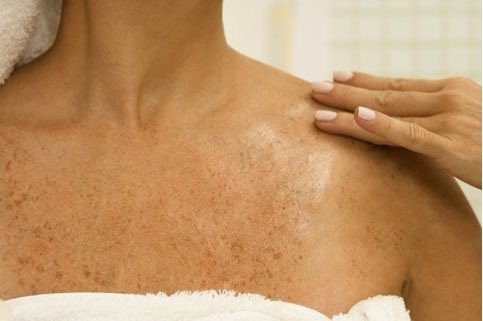
Spots on the body of allergic origin are treated with antihistamines and traditional medicine.
Treatment for skin allergies:
- If urticaria appears, you can take Suprastin, Claritin, Zyrtec, Tavegil or another drug.
- When allergic red spots on the skin itch, you can use Gistan in the form of an ointment or cream, homeopathic ointment Iricar, zinc ointment. Hormonal medications for allergies are prescribed by your doctor.
- An effective folk remedy for allergic rashes is raw egg shell powder. Take a third or a quarter of a teaspoon, quenching it with lemon juice.
Treatment of deprivation
Each type of lichen requires a special approach - there is no general therapeutic regimen. Only a dermatologist can prescribe adequate treatment.
Because dry patches on the skin are often itchy and itchy, doctors recommend:
- Take antihistamines - Tavegil, Suprastin, Zyrtec.
- It is impossible to lubricate the affected areas with potent drugs (iodine, salicylic acid, sulfur ointment) - this will cause a worsening of the condition.
- It is forbidden to steam damaged skin and expose it to sunlight.
Dark spots on the body of unknown origin cannot be treated on your own - these can be manifestations of serious diseases.
Common hematomas (bruises) can be treated at home:
- Bodyaga - pharmaceutical powder is diluted with water and a compress is made.
- Iodine - an iodine mesh is applied to the hematoma.
- Lead lotion - you can buy it at the pharmacy and make compresses.
- Heparin ointment - it relieves inflammation and swelling, promotes rapid resorption of the bruise.
Red spots, white, black, brown or bluish on the skin sometimes indicate the presence of diseases, infections, allergies and other problems. Therefore, any unusual appearance of a skin lesion should alert you.
At a minimum, you need to monitor changes in the problem area and think about visiting a specialist for consultation and the necessary treatment.
In some cases you will have to undergo treatment, and in others you will have to use traditional medicine.
This disease is better known as neurofibromatosis type 1. At the initial stage of development, small spots form on the patient’s body, on which a cluster of freckles forms. Most often, the disease manifests itself in childhood. New growths can vary in color and size.
In approximately fifteen percent of cases associated with the presence of pathology, the development of the disease leads to oncological complications. In addition, experts talk about an increased risk of developing the following pathologies:
- cyst in the respiratory organs;
- slow growth and the appearance of empty cavities in the spinal cord;
- gynecomastia and renal artery stenosis.
As a result of the accumulation of melanin in large quantities on the skin, age spots are formed.
In most cases, it is quite difficult to get rid of such manifestations. Let's try to find out what can cause stains? Yellow skin should be given due attention, since reluctance to identify the root cause of the phenomenon can result in the most unforeseen consequences.
The pigment melanin gives skin its tint. Its amount in the upper layers affects the formation of a person’s phototype, hair and eye color. However, giving the skin a certain shade is not the main function of melanin. The main task of the substance is to protect deep tissues from ultraviolet radiation. The brown pigment is called eumelanin, and the yellow pigment is called pheomelanin.
If a representative of the Caucasian phototype tans in the sun, his skin acquires a soft, chocolate shade. At the same time, the disease vitiligo can cover anyone, even the most naturally pale, with yellow and whitish spots.
When yellow spots appear on the skin, this phenomenon is called a facultative change in tissue structure. Such manifestations include the appearance of freckles and disruption of the uniform coloring of surface tissues.
Depending on the etymology, there are several types of yellow spots on the skin:
- Flat - are small neoplasms that have a rounded shape. Occurs on the soles and palms. They often form in older people due to excessive accumulation of cholesterol in the body and the development of atherosclerosis.
- Diffuse - yellow spots on the skin in the form of a massive accumulation of papules. In most cases, they become a side effect of diseases such as myeloma and leukemia.
- Intertriginous - is a hereditary disease. They often appear on the skin of people whose parents suffered from an excess of cholesterol in the body.
- Palmar - as in the previous case, such yellow spots on the skin are genetically determined. Typical for people whose bodies have disorders of lipoprotein metabolism.
- Eruptive - arise as a result of unhealthy lipid metabolism. Most often concentrated in the area around the eyes, on the eyelids, near the nostrils.
If a yellow spot appears on the skin, it can be caused by the following:
- minor subcutaneous hemorrhages;
- dermatological diseases;
- shocks, other mechanical effects on tissue;
- lipid metabolism disorders in the body;
- systemic illnesses.
What causes pale yellow spots? The skin tends to acquire a similar shade with the development of lichen versicolor and urticaria pigmentosa. It is these diseases that are initially not accompanied by absolutely no other symptoms. A person feels absolutely healthy for a long time until the disease begins to progress. Therefore, if yellow spots appear on the skin, you should immediately seek advice from an experienced dermatologist.
As for hemorrhages, which can cause yellow-brown spots on the skin, they are often caused by damage to the smallest vessels.
At first, the spots may have a red tint, which over time changes to blue and later to yellow.
Systemic diseases such as lupus, Addison's disease, diabetes mellitus, and oncology can also lead to the appearance of yellow spots on the skin.
Yellow spots often signal improper functioning of internal organs: kidneys, liver, gall bladder. Manifestations of this type also occur with sexually transmitted diseases. They can also be caused by constant stress and lack of sleep. Among other things, a common cause of the formation of yellow spots is the wrong approach to skin care.
Treatment
Principles of therapy
In order to get rid of dark spots forever, you should understand the reason for their appearance. Common areas of hyperpigmentation can be lightened at home using acids (acetic, citric) and hydrogen peroxide solution. The use of cosmetic ointments or creams (Melanativ, Skinoren, Retinoic ointment) helps to lighten dark spots on the face (freckles or lentigo) or spots on the body after pregnancy.
It is best to contact a dermatologist or cosmetologist for this purpose. They have more effective means in their arsenal - chemical peeling and other techniques.
If the formations are small, they can be removed with a laser. This procedure is considered the most modern, it is quick and without complications.
For some patients, the doctor recommends fighting pigmentation with cryotherapy and radio wave therapy.
To remove a nevus that begins to grow or shows other signs of degeneration, surgery is necessary. The excised area of damaged skin must be examined histologically .
Folk remedies
Traditional medicine also offers a number of remedies that will help cope with cosmetic defects.
If, after examination by a doctor, it is determined that there are no serious diseases, the following control methods can be used:
- Hydrogen peroxide. By mixing it with an equal amount of ammonia or glycerin, you can effectively lighten stains by applying this mixture twice a day until completely dry.
- Lemon juice. This is a proven remedy for brown spots. Juice mixed with water (1:6) is used for rubbing. You can make a mask from undiluted juice by combining it with starch. After 20 minutes the composition is washed off.
- Clay. White clay, which is sold in pharmacies, is also used for lightening. It is applied for only 20 minutes, mixed with lemon juice.
- Onion. Fresh onion juice gets rid of pigmented areas.
- Parsley. An infusion of this plant, which is prepared by steeping the crushed bunch with a liter of boiling water, has a bleaching property. Leave the solution for 4 hours and then wipe your face with it. If you want to see a faster effect, place gauze soaked in parsley infusion for 20-25 minutes. No less effective is mixing grated parsley with sour cream in equal quantities and applying to the face.
- Cucumber juice. The cucumber and its peel are crushed, poured with a glass of boiling water and infused. After 5 hours the infusion is ready.
- Dairy products. Apply lotions of milk, kefir, etc. to the face for 15 minutes.
- Carrot. Gruel of grated carrots from the table. A spoonful of lemon juice works great on stains. Apply it for 15 minutes.
- Bodyaga. It is best used when solar activity is reduced. Pour the herb powder with peroxide or add any oil and apply for 20 minutes, lightly rubbing the resulting mass. After such a mask, the skin will begin to peel off, so you can’t do without moisturizing. Use bodyagu only 1-2 times a week.
- Fees. When the appearance of spots is associated with a problem with the gallbladder, the choleretic preparation will help improve the functioning of the body. Corn silk is mixed with calendula, chamomile and birch leaves.
At home, twice a week you can use peeling, which will very delicately remove stains by exfoliating the top layer of the epidermis:
- A crushed spoon of almonds is mixed with oatmeal and dry milk (1: 1: 0.5). Add a little water and massage problem areas for 5 minutes.
- 5 crushed aspirin tablets are mixed with 25 ml of kefir and apply this mixture to the face.
Prevention
Freckles, moles or other brown spots can be prevented. Especially during pregnancy, in old age and in the presence of white skin prone to hyperpigmentation. To do this, you should follow certain recommendations:
- Protect your skin from sunlight, use special creams and cover your face with a Panama hat.
- Do not visit the solarium.
- Sunbathe only early in the morning and in the evening.
- If a spot appears and grows, seek help in a timely manner.
If hyperpigmentation occurs in response to disturbances in the functioning of internal organs, then proper treatment under the guidance of specialists will help get rid of the problem.
Prevention of occurrence
Prevention of hyperpigmentation is not a specific drug therapy, but a lifestyle.
- take vitamins;
- do not expose the skin to excessive ultraviolet irradiation;
- use protective creams;
- if you have to walk, apply sunscreen to areas of pigmentation;
- drink enough liquid.
Removing brown spots using cosmetics is not a solution. It is not difficult to remove an aesthetic defect. But, if a pathological process is hidden under the change in skin color, then it is impossible to get rid of brown spots without proper treatment.
As a rule, most forums, discussions and recommendations on the Internet that relate to problems with skin pigment metabolism are intended for women. Meanwhile, a significant number of men may also experience similar problems, they just do not concern the stronger sex as much. But such an indifferent approach is not entirely correct, since skin pigmentation disorders (for example, age spots on the legs) may indicate a serious condition of the body. And after a short period of time, we may not be talking about eliminating a cosmetic defect, but about the full treatment of diseases of internal organs.

Skin mastocytosis
With such a lesion, spots with black dots appear on the person’s body. The disease occurs due to the pathological proliferation of mast cells (they are responsible for the state of human health) and their accumulation in large numbers in the epithelium. Doctors divide the disease into a skin form, in which dark spots, nodules and spider veins appear on the human body, and a systemic form (the spots spread to internal organs).

Mastocytosis in a child occurs in the first years of his life. The most common form of mastocytosis is cutaneous. The disease goes away on its own as you grow older.
In elderly and adult people, the disease spreads not only to the skin, but also to internal organs (heart, kidneys, liver, spleen).
READ ALSO: Elena Malysheva about acne, acne is curable | Clear skin without acne
There are the following types of disease:
- Maculopapular - multiple dark rashes appear on the skin, which, when scratched, turn into blisters and hives. This type of mastocytosis is also called urticaria pigmentosa.
- Nodal form. With this condition, a person is diagnosed with small blisters ranging in size from 7 to 10 millimeters. They can be pink or light brown, often merge and form large plaques.
- Solitary form. In this case, one large dark spot with a size of 5 to 6 centimeters appears on the body. It is usually localized on the shoulders, abdomen, back and neck. If you accidentally touch the lesion, it will turn into a blister and cause severe itching.
- Erythroderma - yellow-brown dense spots. They have no boundaries, are easily deformed and provoke the formation of cracks and ulcers. Most often, the spots spread to the buttock folds and hollows.
- Telangiectasia is a large number of dark spider veins in the neck and chest. In most cases, such formations are formed in women.
Treatment of any type of mastocytosis should be comprehensive and include the use of hormonal agents, cytostatics, antioxidants and antiallergic medications. If black spots appear on the body in a single quantity, then it can be eliminated surgically.
Red spots on legs
A popular cause of red spots on the legs are so-called “sun spots.” The most common places to find these sunspots are in areas of the body that receive the most sun exposure. This is why they often appear on the legs.
An increase in the amount of melanin occurs in the skin when exposed to sunlight. When this sunlight is exposed to the skin in large quantities, the skin pigmentation begins the process of producing excess melanin. And the result of this is its penetration into the epidermal levels.
It is this process that leads to the formation of red spots on the legs. These spots may form in small clusters, or they may appear as large spots. The latter can lead to skin cancer. If a person doubts something, then it is wise to seek medical help.
